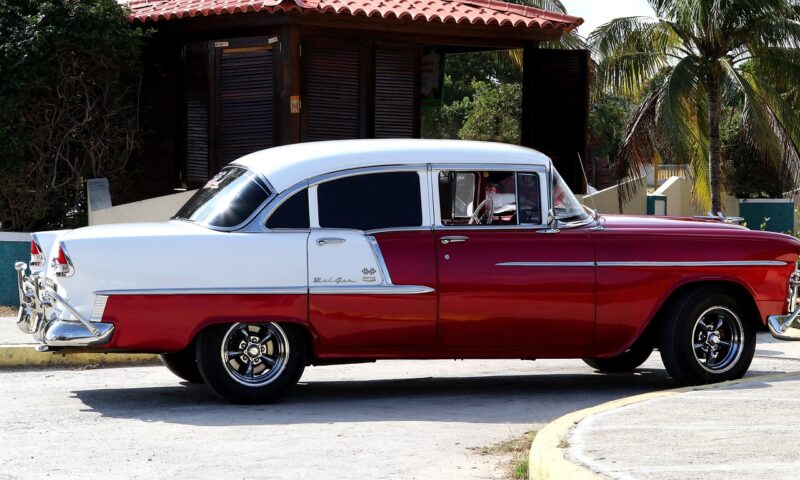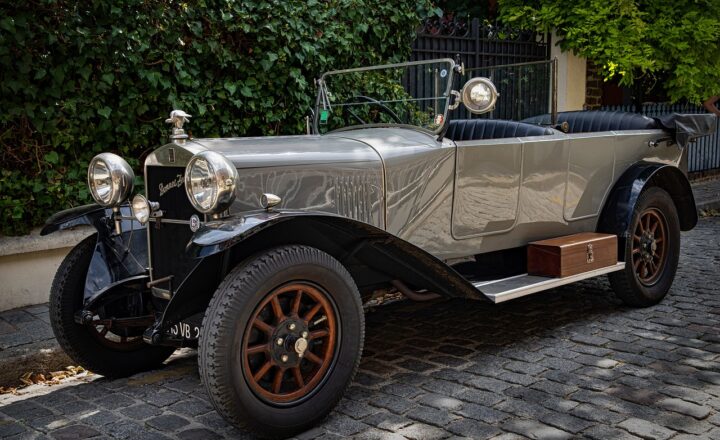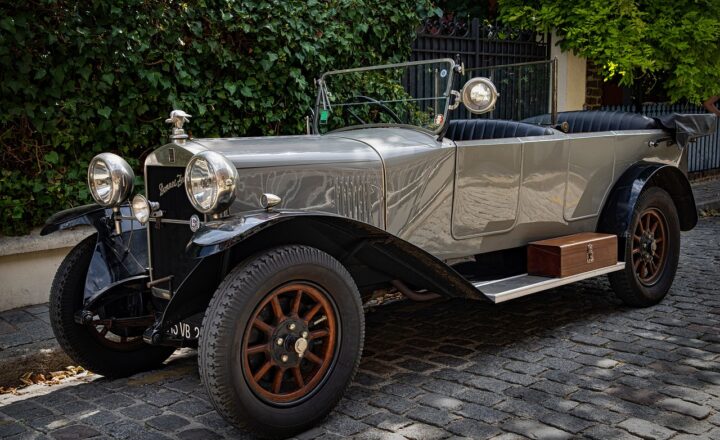The Chevrolet Bel Air: A 1950s Icon of American Style and Chrome
November 13, 2024

The Chevrolet Bel Air is more than just a car; it is a symbol of American automotive history and post-war optimism. Launched in the early 1950s, this classic automobile quickly became a favorite among car enthusiasts and the general public alike. With its bold design, luxurious features, and powerful performance, the Bel Air has cemented its place as an icon of American culture.
1. The Birth of the Bel Air
The Chevrolet Bel Air debuted in 1950 as a premium model in Chevrolet’s lineup, originally introduced as a two-door hardtop in a range of vibrant colors. The name ‘Bel Air’ was derived from a wealthy suburb in Los Angeles, symbolizing sophistication and luxury. The initial models featured a sleek design characterized by chrome accents, fins, and a comfortable interior filled with stylish amenities.
As the decade progressed, the Bel Air evolved, with changes in design that reflected the trends and tastes of the times. By 1955, the second generation of the Bel Air arrived, showcasing a complete redesign, new engines, and improved performance capabilities that would further elevate its status as an American icon.
2. Design and Features of the 1955-1957 Bel Air
The most renowned version of the Bel Air is arguably the 1955-1957 model, often referred to as the “Tri-Five” Chevys. These models are celebrated for their striking design elements that encapsulated the bold spirit of 1950s America.
Key features of the 1955-1957 Chevrolet Bel Air:
– Exterior Design: The Bel Air’s body featured a distinctive shape with pronounced tail fins, a wide stance, and chrome detailing that was emblematic of post-war automotive styling. The bold front grill and large rear tail lights added drama and allure.
– Interior Luxury: The interior of the Bel Air was designed with comfort in mind, boasting plush seating, a shiny dashboard adorned with chrome accents, and optional features such as power windows and air conditioning, marking it as a genuinely luxurious vehicle for its time.
– Vibrant Color Options: The available colors were a reflection of the upbeat culture of the 1950s, with options like Turquoise, Coral, and Cascade Green. Two-tone color combinations also became popular, adding to the car’s visual appeal.
3. Performance and Engineering
The Chevrolet Bel Air wasn’t just about beauty; it was also engineered for performance. The 1955 model introduced the first small-block V8 engine, allowing for improved power and acceleration. Drivers enjoyed a smooth ride thanks to the advanced suspension technology of the era.
Starting with a 265 cubic inch V8 engine that produced 162 horsepower, enthusiasts were soon thrilled to find options for more powerful engines, including the high-performance 283 cubic inch V8 that could put out up to 283 horsepower when equipped with dual four-barrel carburetors.
Key performance highlights:
– Transmission Options: Buyers could choose between a standard three-speed manual transmission or the optional Powerglide automatic transmission, offering flexibility to suit various driving preferences.
– Handling and Comfort: The Bel Air featured an innovative coil spring suspension system, allowing for a smoother ride, especially on America’s expansive highway system that was becoming more prevalent in the 1950s.
4. Cultural Impact and Legacy
The Chevrolet Bel Air quickly became ingrained in American culture, appearing in popular media, movies, and music. Its sleek design and stylish profile made it a favorite for car collectors and movie makers alike.
Hollywood often turned to the Bel Air to denote coolness and status, capturing the imaginative spirit of the 1950s. Movies like “American Graffiti” and “Grease” featured the Bel Air in memorable scenes, further embedding the vehicle in the collective memory of generations.
Moreover, the Bel Air became a symbol of freedom and adventure associated with the open road, contributing to the rising popularity of road trips and car culture in the United States late into the century.
5. Restoring and Collecting the Bel Air
For car enthusiasts today, restoring a classic Chevrolet Bel Air has become a passion project. Collectors appreciate the car’s vintage charm and potential for customization, as well as the numerous parts available for restoration.
Tips for potential restorers:
– Find a Reliable Model: When looking for a Bel Air to restore, consider sourcing models with less rust and damage, as these will require less investment in time and money.
– Join a Community: There is a vibrant community of classic car enthusiasts. Joining clubs or online forums can provide valuable insights into restoration and maintenance, as well as access to parts.
– Quality of Parts: Utilize aftermarket parts and restoration kits, or consider purchasing original parts for authenticity. Balancing quality with budget is key when restoring a vintage car like the Bel Air.
Conclusion
The Chevrolet Bel Air remains a symbol of 1950s American automotive excellence. With its remarkable design, powerful performance, and cultural significance, it continues to captivate car lovers and historians alike. Whether you’re drawn to its nostalgic charm or its engineering prowess, the Bel Air stands as a testament to an era of innovation and style in the automotive world. The legacy of the Bel Air lives on, inspiring new generations to appreciate classic cars and the stories they tell about America’s past.
If you find yourself fortunate enough to encounter a Bel Air, take a moment to admire the luxurious lines, the shiny chrome, and the history that resonates from every angle. This car is not just a vehicle; it is a piece of history, a symbol of freedom, and a tribute to the ingenuity of American automotive design.







